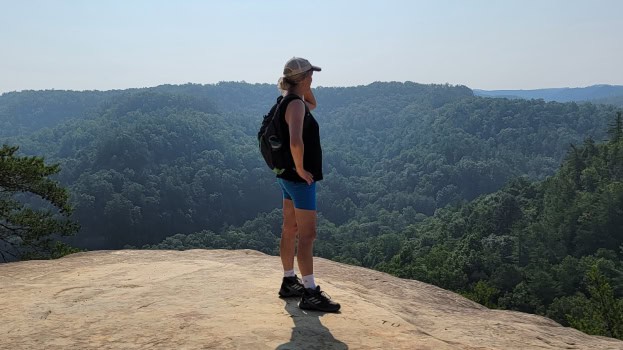Day hikes are so much fun! But they are even better when you are prepared. You don’t need too many day-hike essentials, but the list below will keep you safe (and satiated) on your next hike!
Disclosure: Some of the links below are affiliate links, meaning, at no additional cost to you, we may receive a commission if you click through and make a purchase.
Day-Hike Necessities: What To Bring on the Trail With You
Water
No matter how short or long the hike is, it’s always a good idea to have water with you.
We typically hike with 20-24 oz on short hikes (up to 4 miles). However, that will also vary depending on the weather. When hiking in the summer, one of the top risks is dehydration. It’s always good to bring more water than you think you’ll need.
Hiking Tip: We always have extra water in the car, waiting for us after a hike. Just in case!
Insect Repellent
Nobody likes getting attacked by mosquitoes and gnats! And ticks are never fun to deal with. A good insect repellent will make your hike more pleasant.
Sunscreen
You may not think you’ll need it, especially if you’re hiking in the woods. But wearing sunscreen is always a good idea (even in the winter!). Apply to any exposed skin, including your ears.
First-Aid Kit
Isn’t it inevitable that someone will fall and scrape a knee or hand on a rock? (Hopefully it’s never worse than that!) It’s always good to have some bandages or even a small first-aid kit on hand.
Hand Sanitizer / Wipes
Whether you need to clean off a scrape (see above) or you want to enjoy a snack (see below), hand wipes or hand sanitizer are crucial.
Snacks or Picnic Lunch
We typically plan our hikes so we can enjoy lunch at the summit (or the waterfall). It honestly makes everything taste better!
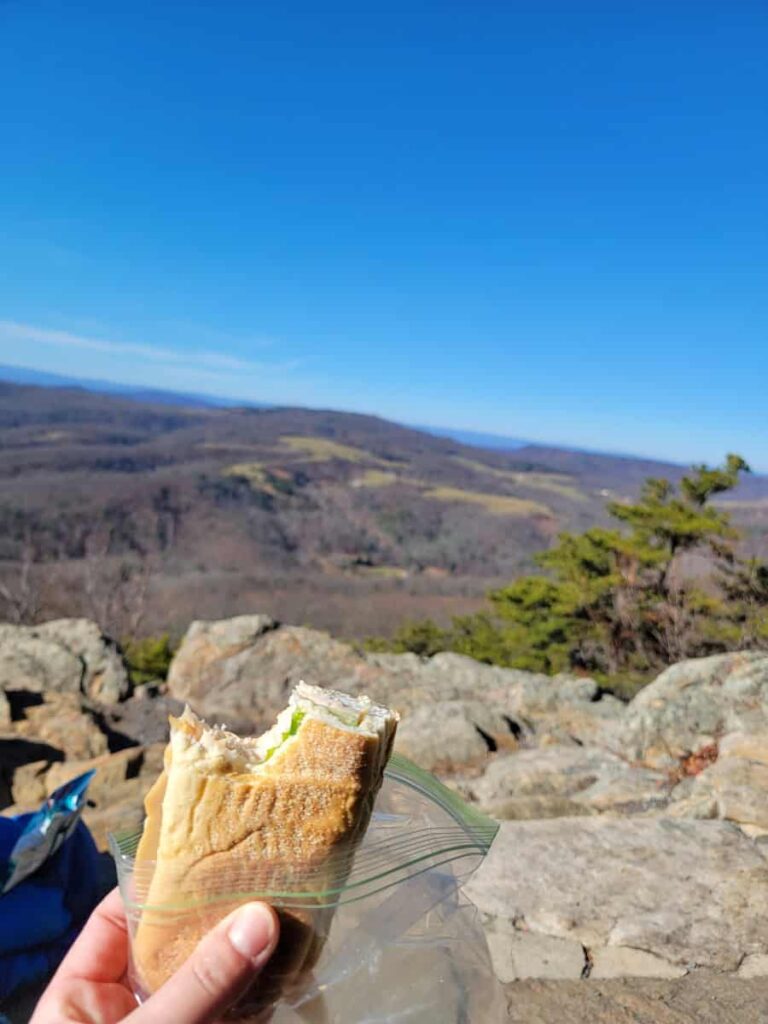
But, no matter what time of day you’re on the trail, you’ll need energy to keep going. Pack some of your favorite granola bars, peanut butter crackers, or candy (seriously – many hikers do this!). You don’t want to be angry (and experience low blood sugar) on the trail.
Hand Warmers
On winter hikes (or maybe where the temperature at the summit will be much colder than at the trailhead), we bring hand warmers with us. Even with the best gloves, it’s still nice to have the additional heat, especially if it’s at or below freezing.
Flashlight and/or Headlamp
Even if you’re doing a short hike during the day, throw a small flashlight in your bag! You’ll never know when you need it. You could come across a fun cave begging to be explored – and your phone flashlight is not going to cut it (ask me how I know…).
Headlamps are great for sunset hikes and hiking later in the day. They keep your hands free so you can still use hiking poles or do those fun rock scrambles.
Detailed Map
You don’t need a physical old-school paper map (unless you want one!) on the trail with you. However, it’s always a good idea to download a map to your phone before you head out on the trail. Sometimes the trailhead has a map you can take a photo of, but that’s not always the case.
You can also use an app like AllTrails or Strava, but if your cellular service isn’t strong, you won’t be able to follow the trail on the app (it’ll track you, but that’s all).
A Bag For Trash
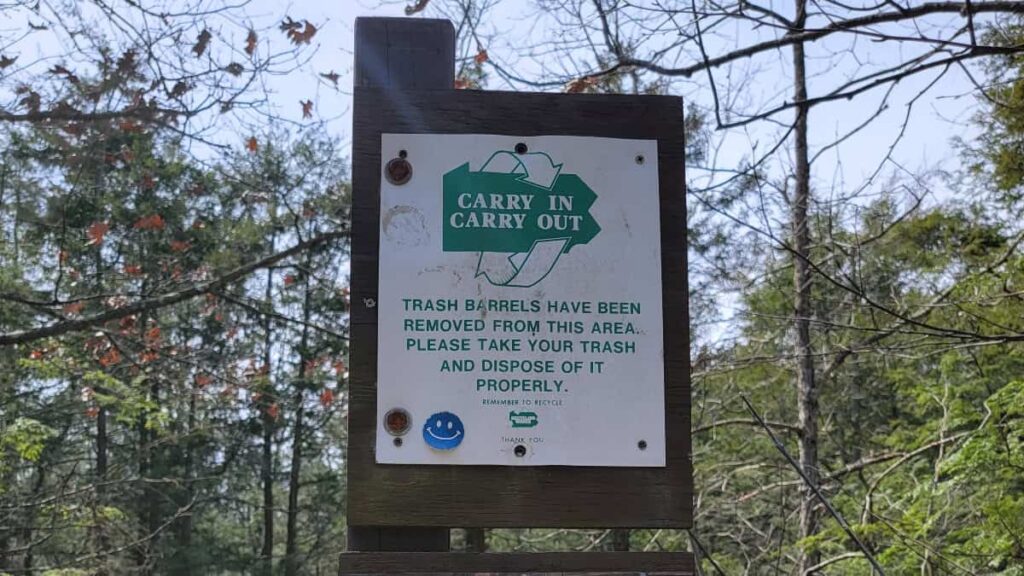
Many popular day-hike locations are “Carry In/ Carry Out” locations – meaning they do not have trash cans or other trash receptacles on-site. Make a plan to bring your trash home with you! To make it easier and cleaner, bring an old grocery bag with you to stow your banana peels and wrappers.
Tissues
Tissues have multiple jobs when you’re on the trail! Whether you have a runny nose or you’re trying to stop a scrape from bleeding, they are so important to carry. And, even more important, when you need to relieve yourself in the woods (again, don’t ask how I know…).
We carry around a small travel pack of tissues. But you can also throw a handful into a ziplock bag. Whatever works for you!
Backpack
You need a way to carry all of the above items! The best backpacks have a few different pockets so you can organize your stuff. And even better if it has a place to hold your water bottle. But you can use whatever you have on hand.
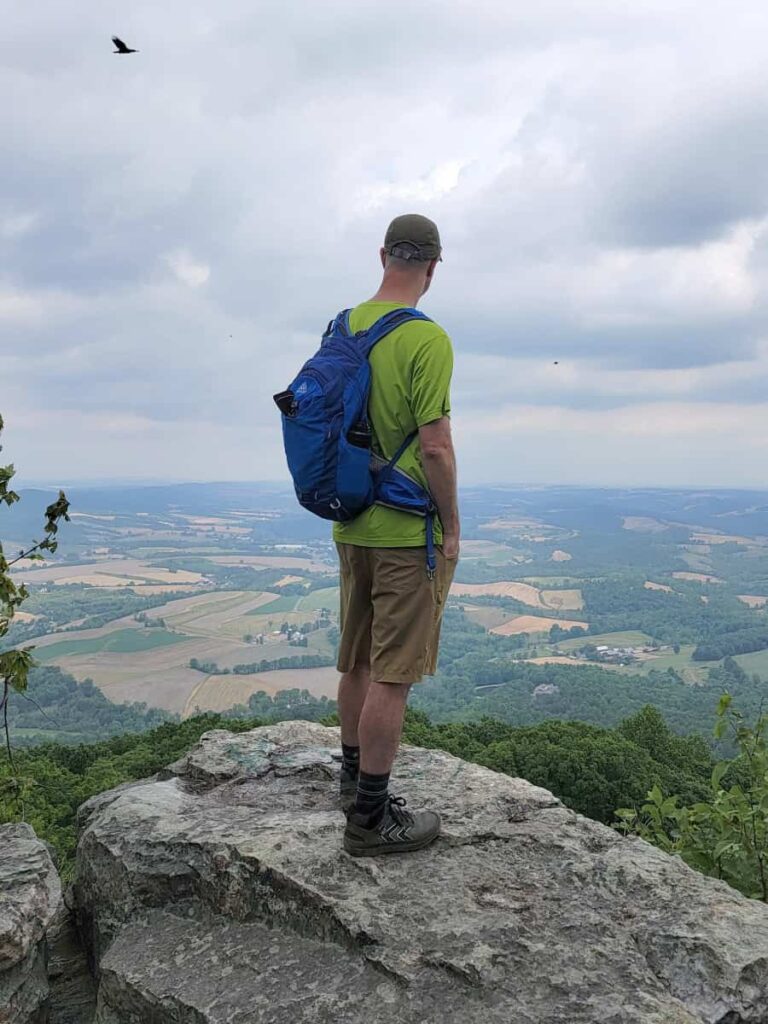
I still hike with an old school bag that the kids no longer use. The kids use mini backpacks to hold their lunch, snacks, and a water bottle.
What to Wear on a Day-Hike
Clothing
Clothing depends a lot on the time of year that you’re hiking. However, no matter when you go out, try to avoid wearing cotton clothing. Synthetic fibers that are sweat-wicking are ideal, regardless of whether it’s the middle of July or January.
If the weather is cooler, dress in layers for added comfort. You’ll get hot trekking up a steep hill, so it’s nice to be able to strip off layers to cool off.
If your planned trail has a significant elevation gain, double-check the weather at the summit. It might be 60° at the trailhead but 40° at the top!
Shoes
Sometimes it feels like anything goes when it comes to hiking shoes. I’ve seen people hike in Crocs and even those cheap Old Navy sandals! But that isn’t the smartest thing to do.
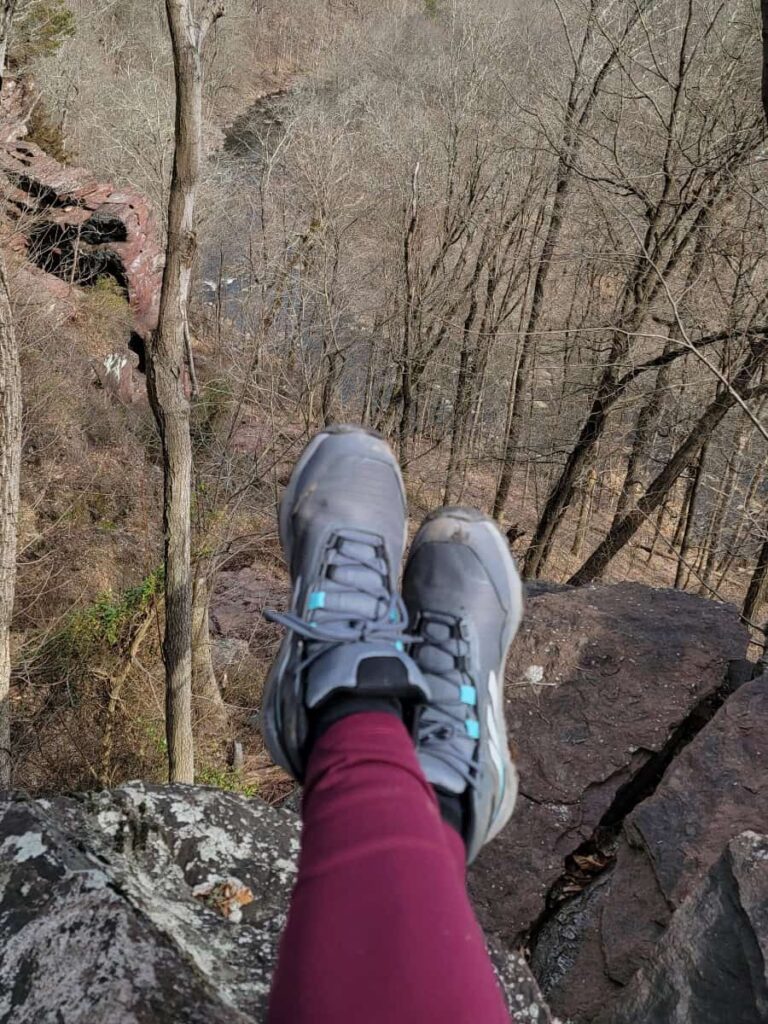
You don’t need to buy hiking boots or trail sneakers to go on a day hike. But they exist for a reason! They usually offer more support, better tread, and some form of water resistance.
However, sneakers are fine, but try to avoid ones with a foam sole – they have little to no grip and you’ll be slipping and sliding all over the rocks.
And if you like sandals, brands like Teva and Keens make great hiking sandals that have good treads and strap securely to your feet.
Hat
Hats can be a personal preference. Some people just don’t like them. I get that. But, they are still good to wear on a hike. I’m sure there’s no scientific basis for this, but I feel like I’m less likely to get ticks on my head if I’m wearing a hat.
Pick a hat that is comfortable for you. And if you’ll be out in the sun, consider purchasing one that shades your neck as well as your face.
Hiking During Hunting Season

If you are hiking during hunting season, please wear bright orange! This way, hunters will see you and not mistake you for a deer or wild turkey. One of the easiest things to do is to throw on a bright orange vest over your clothes. In the winter, a bright orange winter hat can work.



